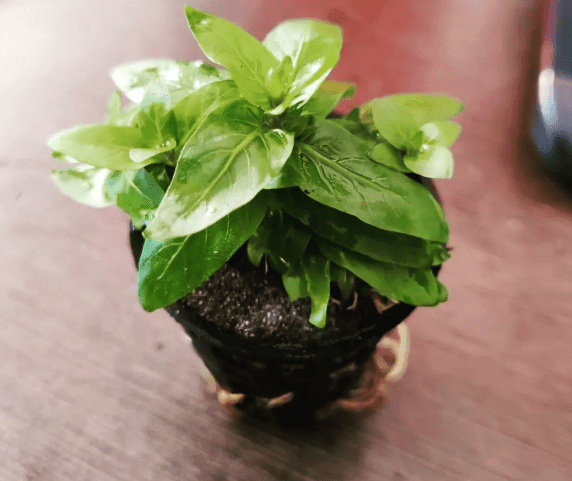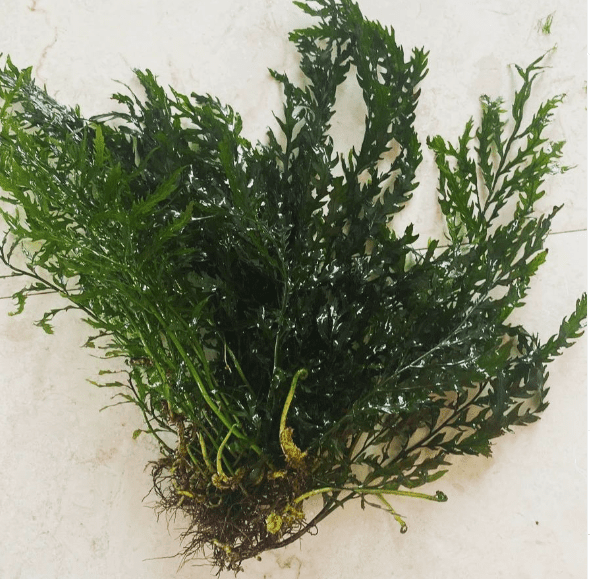You might think, “Why bother replanting?” Well, there are a few reasons why it’s essential for the well-being of your plants and your aquarium as a whole:

- Growth Management: Aquatic plants are known for their rapid growth. Over time, they can outgrow their initial planting spots, leading to overcrowding and competition for resources. Replanting gives them the space they need to thrive.
- Health and Vitality: Just like land plants, aquatic plants can experience stress, leading to yellowing leaves, stunted growth, or even algae buildup. Replanting can help rejuvenate them by giving them access to fresh nutrients, ideal lighting, and a less crowded environment.
- Aesthetic Changes: Aquariums are living art! You might want to redesign your tank layout, add new elements, or refresh the look. Replanting allows you to create a new, vibrant design that complements your fish and the overall aesthetic of your aquarium.
Signs That It’s Time to Replant
Knowing when to replant is as important as knowing how. Here are some telltale signs that your aquatic plants are signaling it’s time for a change:

- Overgrowth: If your plants are growing too large or too dense, it’s a clear indication of overcrowding. This can lead to competition for light and nutrients, affecting their health and growth.
- Poor Health: Look for signs of stress like yellowing leaves, stunted growth, or algae buildup. These can be symptoms of insufficient nutrients, poor lighting, or other environmental factors. Replanting can often give them a boost.
- Root Issues: Roots can get tangled, root-bound, or even damaged. This restricts their ability to absorb water and nutrients effectively. Replanting can help them establish a healthy root system.
- Aesthetic Changes: If you’re itching to redesign your aquarium, replanting is a fantastic way to achieve a new look and create a visually appealing tank. It’s a good opportunity to move plants to different spots and create a more balanced design.
How to Replant Aquatic Plants
Replanting is a simple process, but it’s essential to do it correctly to ensure your plants thrive in their new home. Here’s a step-by-step guide:

- Choose the Right Time: The best time to replant is during the plant’s active growth period, typically in the spring or early summer. Avoid replanting during periods of dormancy or stress, as this can further weaken the plant.
- Prepare the New Location: Select a spot in your aquarium that meets the plant’s light and nutrient needs. Make sure the substrate is suitable for the type of plant you are replanting. Some plants thrive in nutrient-rich substrates, while others prefer basic gravel.
- Remove the Plant: Carefully remove the plant from its current location. If it’s rooted in the substrate, gently dig around the roots to avoid damage. For plants attached to decorations or other structures, detach them with care.
- Inspect and Trim: Check the plant’s roots for any damaged or decayed portions. Remove these to prevent rot or disease. Trim any dead or unhealthy leaves to encourage new growth. This helps the plant focus its energy on establishing itself in its new environment.
- Replant the Plant: Place the plant in its new location, ensuring the roots are spread out and not tangled. Gently press the substrate around the roots to secure the plant. For plants with extensive root systems, you might need to anchor them more securely.
- Monitor and Adjust: After replanting, keep a close eye on the plant for any signs of stress or adjustment issues. Check for proper light levels, nutrient availability, and overall health. Make any necessary adjustments to ensure the plant’s successful establishment.
Tips for Successful Replanting
Here are some additional tips that can boost your replanting success and ensure your aquatic plants flourish in their new homes:

- Use High-Quality Substrate: A nutrient-rich substrate is like a healthy meal for your plants. It provides essential nutrients, supporting healthy root development and promoting strong growth. Consider using a specialized aquatic plant substrate or adding plant fertilizers if needed.
- Maintain Proper Lighting: Just like land plants, aquatic plants need the right amount of light. Too much or too little light can impede growth and even cause stress. Use a timer to provide consistent lighting and avoid sudden changes that can shock your plants.
- Avoid Overcrowding: Don’t overcrowd your aquarium! Give your plants space to breathe and absorb nutrients effectively. Overcrowding leads to competition, which can hinder growth and create an imbalance in your aquarium’s ecosystem.
- Regular Maintenance: Regularly check your plants for any dead or decaying matter. Removing this debris helps prevent disease and encourages healthy growth. Also, be on the lookout for any signs of pests or diseases, and take steps to address them promptly.
- Be Patient: Remember, plants need time to adjust to their new surroundings. Give them some time to settle in and start growing. With proper care and attention, they will soon thrive in their new location.
Conclusion: How Long Before Replant Aquatic Plant?
Replanting aquatic plants is an essential part of maintaining a healthy and beautiful aquarium. By understanding the signs that it’s time to replant and following proper techniques, you can ensure your plants continue to thrive and enhance your aquarium’s environment.
Whether you’re managing plant growth, improving health, or redesigning your tank, understanding how and when to replant will help you achieve the best results. With proper care and attention, your aquatic plants will continue to add beauty and functionality to your aquarium for years to come.
FAQs
How often should I replant my aquatic plants?
The frequency of replanting depends on the growth rate of the plants and the conditions in your aquarium. Generally, replanting every 6-12 months is a good practice, but monitor plant health and growth to determine the best timing.
Can I replant aquatic plants during the winter?
It’s best to avoid replanting during winter or when plants are in a dormant phase. Replant during the active growth period for optimal results.
What should I do if my plant isn’t thriving after replanting?
Check the light, substrate, and nutrient levels. Ensure the plant is not exposed to extreme temperatures or pests. Adjust care as needed and be patient, as plants may take time to adjust.
Does the type of aquatic plant matter when deciding how often to replant?
Absolutely! Fast-growing plants, like Java Fern or Amazon Sword, will need more frequent replanting than slower-growing species. It’s important to research the specific needs of your plants.
What are signs of root-bound plants?
You’ll notice roots growing out of the pot or substrate, and the plant might be struggling to absorb nutrients. This indicates they need more space and may need replanting.
Can replanting stress my aquatic plants?
Yes, replanting can be stressful, so try to do it gently and avoid disturbing the roots too much. It’s a good idea to add some plant fertilizer after replanting to help them recover faster.
Is there a specific time of day best to replant?
While there’s no strict rule, it’s generally best to replant during the daytime, giving your plants a chance to acclimate to their new environment with ample light.
Should I do a water change after replanting?
It’s a good idea to do a partial water change a few days after replanting to remove any debris or stress hormones released by the plants.
How does tank size affect replanting frequency?
Larger tanks generally allow for more space and less overcrowding, meaning replanting may be needed less frequently. Smaller tanks might require more frequent replanting to maintain a healthy balance.
What type of plant fertilizer should I use?
Choose a fertilizer specifically designed for aquatic plants. Look for liquid fertilizers or tablets that provide the essential nutrients your plants need to thrive.
Proper replanting is key to maintaining a vibrant and healthy aquarium. By following these guidelines and paying attention to your plants’ needs, you can create a thriving aquatic environment for your fish and plants. If you’re interested in learning more about tech news, feel free to visit my website: www.HowToGrowPlant.com. Happy planting!
